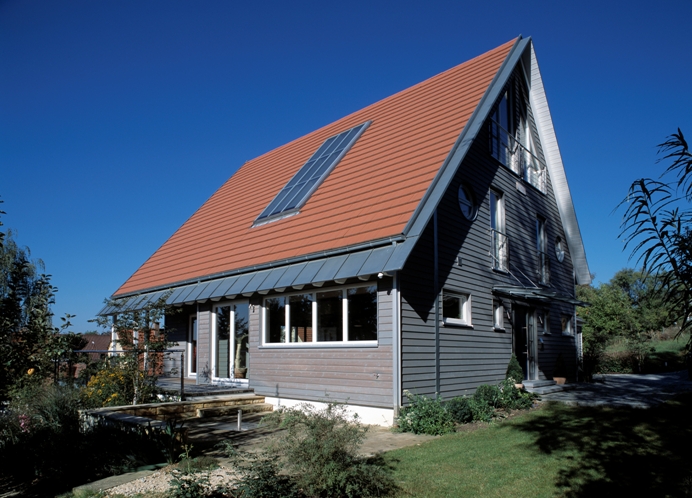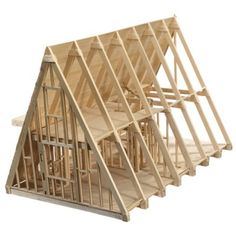An A Frame House is an architectural house style featuring steeply-angled sides (roofline) that usually begin at or near the foundation line, and meet at the top in the shape of the letter A. An A-frame ceiling can be open to the top rafters.
Although the triangle shape of the A-frame has been present throughout history, it surged in popularity around the world in the post-World War II era, from roughly the mid-1950s through the 1970s. It was during this time that the A-frame acquired its most defining characteristics.

Style
A-frame buildings are an ancient form known in Europe, China, and the South Pacific islands sometimes called a roof hut and were simple structures used for utilitarian purposes until the 1950s but then prominent architects set the stage in designing A-frame vacation homes. Andrew Geller turned the old idea of the A-frame into a new fashion in 1955 when he built an A-frame house on the beach in Long Island, New York known as the Elizabeth Reese House. Named for the distinctive shape of its roofline. Before long, thousands of A-frame homes were being built around the world.
The Celtic tribes of Europe also used this conical roof structure and the only difference being was the round base instead of rectangular. The conical roof structure was made out of round branches and then covered with turf, reed, heather or ferns. This steep pitch was necessary to shed water off the structure.
Rise in popularity
The post World War II popularity of the A-frame has been attributed to a combination of factors including people’s extra disposable income, the inexpensiveness of building an A-frame structure, and a new interest in acquiring a second home for holiday. Several small cities were erected outside Glasgow after the war as the city was heavily bombed and these places were quickly built to house the homeless and less well off and are still lived in up to this day.
Another factor contributing to the rise of the A-frame included the adaptability of the structure itself, which enabled architects to experiment with more and more modern designs. A-frames were a perfect medium in which architects could explore their creative side, since they were relatively cheap to build. Additionally, many people preferred the idea of a ‘modern-style’ vacation home to that of a ‘modern-style’ primary home. A-frames became available as off ite manufactured kits lowering the cost even more.
After the rise of the archetypal A-frame, architects soon began experimenting with new designs; this led to what became known as the modified A-frame style.





